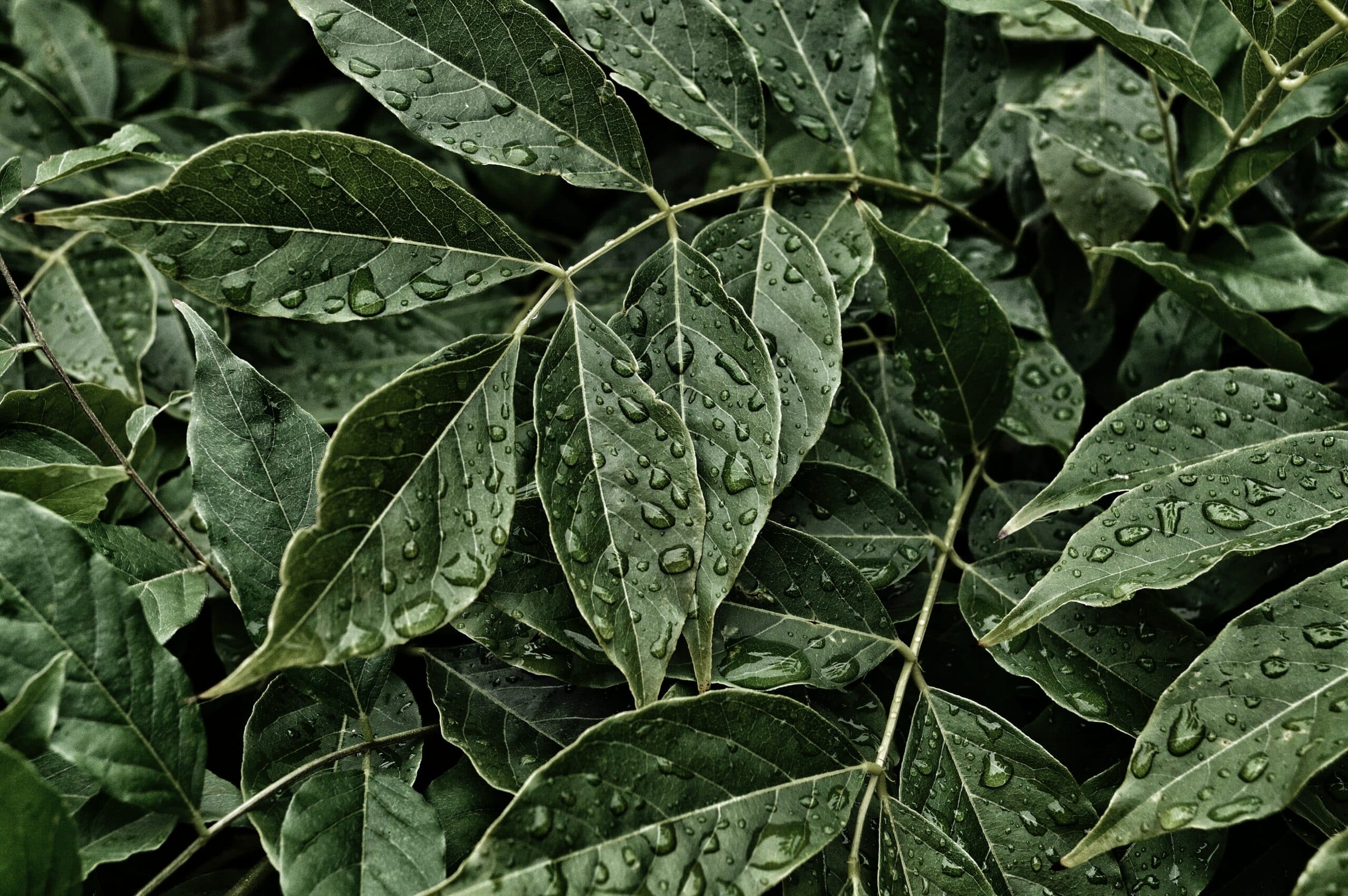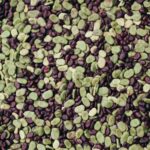Have you ever wanted to grow your own coffee plant but didn’t know where to start? You may have heard that the process is complicated or expensive, but it doesn’t have to be. Growing your own coffee plant can be an enjoyable and rewarding experience if you understand the basics of care and cultivation. In this article, we’ll walk you through everything you need to know about growing and caring for a thriving coffee plant.
Coffee plants are a unique addition to any garden or home, bringing a distinct flavor of tropical vibes with their glossy green leaves and fragrant white blooms. They also provide an exciting opportunity to create your own fresh cup of java right from your own backyard! In addition, they make excellent houseplants due to their low-maintenance needs.
If you’re looking for an exotic yet easy-to-care-for houseplant, then look no further than the coffee plant! With just a few simple tips on how to get started, you can enjoy the amazing benefits of growing your own delicious cup of coffee in no time at all. Read on for our comprehensive guide on how to properly care for and cultivate your very own coffee plant.
Where To Get A Coffee Plant
Tending to a garden is a beautiful and rewarding experience. But, what if you could have an exotic plant in your garden? A coffee plant! Juxtaposed to the usual, it adds a unique touch of flair to any home.
Getting started with growing a coffee plant is easier than one would think. All it takes is just knowing the right place to get one. Coffee plants are typically found in nurseries and garden centers or even online on websites like eBay. Prices vary depending on the type of coffee plant, but they usually start around $10 and increase from there.
Beginning a new gardening journey with a coffee plant can be exciting and fun for both novice and experienced green thumbs alike. With the right care, your coffee plant will thrive for years to come – giving you that unique touch of flair in your garden!
How To Plant A Coffee Plant
Once you have your coffee plant, it’s time to get planting. This process is relatively simple and can be done in three easy steps.
First, make sure you have a pot with drainage holes in the bottom and fill it halfway with soil. Coffee plants need lots of water so make sure the pot is big enough to accommodate plenty of moisture. Then, place the root ball into the soil and fill up the rest of the pot until it’s just below the rim.
Finally, give your new coffee plant a good soak. Water until it begins to drain from the bottom of the pot, making sure not to over-water. Once complete, place your potted coffee plant in an area that receives bright but indirect sunlight for optimal growth.
With your coffee plant planted and watered properly, you’ll need to ensure that its environment suits its needs for proper growth and care.
Suitable Planting Conditions For Coffee Plants
When it comes to planting coffee plants, the conditions must be just right. It’s important to understand the right soil, water, and temperature needs for this particular crop. Coffee plants thrive when they have consistent temperatures between 65-75 degrees Fahrenheit and full or partial sun.
The soil should be rich and well-drained with a pH level of 6-6.5. Poorly drained soil will cause the root system to rot, so it is important to make sure that the planted area has good drainage. Additionally, coffee plants need at least 2 inches of water per week in order for their roots to grow properly.
It’s also beneficial to give your plants a nutrient boost by adding fertilizer during the growing season — typically from spring through fall — as this will help them grow strong and healthy in optimal conditions. With these tips in mind, you’ll be well on your way to successfully cultivating your own coffee plants! Moving forward, proper care is essential for keeping your coffee plants flourishing year after year.
How To Care For A Coffee Plant
Caring for a coffee plant is an important step in ensuring that it thrives and produces the sweet fruits of its labor. To keep your coffee plant healthy, it’s important to pay attention to the proper temperature, soil requirements, and water needs. With the right care and attention, you can enjoy a delicious cup of coffee from your own personal garden!
The ideal temperature for a coffee plant ranges from 60-75 degrees Fahrenheit. Keeping your coffee plant in an environment with these temperatures will help ensure that it grows properly. Additionally, it’s essential to make sure that the soil is well-drained and rich in nutrients. Coffee plants thrive in soils with a pH of 6-7 and plenty of organic matter.
Finally, water is critical for any living thing, including coffee plants. Make sure to water regularly but not excessively – overwatering can lead to root rot or other issues. You’ll want to check the moisture levels periodically by sticking your finger into the soil up to the first knuckle; if it feels dry, then it’s time to give your coffee plant a drink!
Water Requirements For Coffee Plants
Water is the lifeblood of any plant, so it’s no surprise that coffee plants require a specific amount of hydration to thrive. Like a cup of freshly brewed espresso, they need just the right balance – too much and you’ll dilute the flavor; not enough and you have an overly bitter and dry brew. Allusion aside, understanding how much water your coffee plant needs is key for keeping your favorite caffeinated beverage alive and well.
The ideal watering regime for a coffee plant will depend on its environment as well as the season. Generally, you should water when the top inch or two (2-5 cm) of soil dries out completely but before it starts to crack. If you’re growing in pots, check them daily during hot weather or every few days if temperatures are milder. When it comes to outdoor growth, the frequency will vary depending on rainfall levels in your area – often supplemental irrigation is necessary during dry spells.
When watering your coffee plants, make sure to saturate the soil with enough water that some drains from the bottom of the pot or into the ground beneath it. Avoid wetting leaves directly since this can cause fungal infections – instead focus on getting moisture down to their roots where possible. To help keep soil moist between waterings, consider mulching around plants with organic materials such as bark chips or straw. This can also help reduce weeds and protect them from extreme temperatures.
By following these simple guidelines for water requirements, you’ll be providing your coffee plants with all they need to stay healthy and productive while ensuring there’s plenty of delicious beans ready for harvesting in due time!
Sunlight Requirements For Coffee Plants
Sunlight is like the rays of a sun god, streaming down from the heavens and giving life to all living things. It’s no different for coffee plants, which need enough sunlight to grow healthily and yield delicious, aromatic beans. Much like the gods of old, too much sunlight can be detrimental – as can too little. Understanding how much light your coffee plant needs is key to its success.
When it comes to growing a healthy crop of coffee beans, you must understand that there are a few aspects to consider when it comes to sun exposure. First off, you want to make sure that your coffee plant receives between four and six hours of direct sunlight each day. Too much direct sun can cause the leaves of your plant to burn or wilt; not enough sunlight can stunt their growth or cause them to become yellowing and weak. Additionally, if temperatures reach over 80°F during the day, try to provide some shade for your plants so they don’t get too hot.
Finally, keep in mind that although coffee plants need plenty of light for photosynthesis during the day, they also require some darkness at night in order for their flowers and buds to bloom properly. Without these periods of darkness each day, your plants may fail to produce any fruits or flowers at all!
To ensure that your beloved coffee plant gets just the right amount of sunlight each day, consider placing it in an area with partial shade or bright morning sunlight but protection from harsh afternoon sun rays. With just the right balance of light and shade, your coffee plant will thrive!
Soil Requirements For Coffee Plants
Soil is a highly important factor for coffee plants to thrive. It should be slightly acidic, with a pH between 5.5 and 6.5. The soil needs to be rich in organic matter such as peat moss, compost, or manure. To ensure the right acidity level and proper drainage, you can mix potting soil with sand and perlite in a 1:1 ratio.
The roots of coffee plants require good aeration, so it’s very important that the soil doesn’t become compacted over time from overwatering or heavy rain. You should also consider adding a layer of mulch around the base of your coffee plant to keep weeds away and help retain moisture in the soil.
These steps can help create an ideal environment for your coffee plant’s root system to flourish, resulting in healthier growth and more abundant yields of beans in the long run. Next up is understanding how nutrients and fertilizer play a role in keeping your coffee plant healthy.
Nutrients And Fertilizer For Coffee Plants
When it comes to nutrients and fertilizer, coffee plants need a bit of extra help to thrive. Coffee plants are especially sensitive to nutrient deficiencies, so regular fertilizing is essential. Luckily, there are a few simple steps you can take to ensure your plant gets all the nutrition it needs.
The first step is understanding what kind of fertilizer your coffee plant requires. Coffee plants do best with nitrogen-rich fertilizers. However, too much nitrogen can lead to poor flowering and fruit production, so be sure to use the appropriate amount for your particular type of coffee plant. Additionally, make sure you use an organic fertilizer that won’t contain any harsh chemicals that could damage the delicate leaves and roots of the plant.
Finally, it’s important to remember that regular fertilizing isn’t enough on its own; you should also keep an eye on the pH levels in your soil. It’s best to aim for a pH level between 5 and 6.5 for optimal growth. If you’re unsure about how to adjust these levels, consult with a local expert or research online resources for more information. With the right care and attention, your coffee plant will grow happily and healthily!
Pruning and trimming coffee plants is the next step in keeping them healthy and productive.
Pruning And Trimming Coffee Plants
The pruning and trimming of coffee plants is an essential part of their care. It’s like a hairdresser or barber grooming your hair – it can be the most important step in maintaining the aesthetic and health of a plant. So, let’s grab our shears and get to work!
Firstly, there are two types of pruning: structural pruning, which involves controlling the shape and size of the plant; and maintenance pruning, which removes dead or diseased branches. For both types, it’s important to make sure you use sharp tools that are at least partially sterilized with rubbing alcohol.
Nowadays, using technology can help us identify the best places to make cuts on the branches. By using apps or software programs that track growth patterns over time, we can quickly determine where to prune for better production or quality. This modern-day approach makes it easier to keep our coffee plants looking their absolute best.
The next step in caring for our beloved coffee plants is pest management – but more on that later!
Pest Management For Coffee Plants
The stakes are high when you’re growing your own coffee. While it may seem like a daunting task, there’s something incredibly satisfying about harvesting and enjoying your own crop. But to get a good harvest, you’ll need to pay attention to pest management for your coffee plants. What can you do to protect them?
Pests such as mites, mealybugs, and thrips can all cause damage to coffee plants if left unchecked. To help manage these potential threats, start by keeping the area around your plants clean and free of debris that could attract pests. Regularly inspect your plants for signs of infestation and take swift action if necessary. This could include pruning off infected branches or spraying with an approved insecticide or miticide.
Remember that prevention is usually easier than cure when it comes to pest management for coffee plants. Check regularly for signs of disease or infestation before they become out of control and be sure to practice good hygiene in the garden so as not to attract pests in the first place. With a bit of diligence and care, you should be able to keep your coffee plants healthy and thriving!
Propagating Coffee Plants
Propagating coffee plants is like giving a new life to an old friend. By taking a small cutting from an existing plant and nurturing it, you can create a whole new plant with the same genetic qualities as the original. Like any other form of gardening, propagating coffee plants requires patience and delicate care.
To begin propagating a coffee plant, make sure to select a healthy branch with at least three leaves on it. Cut the branch off just below where it meets the trunk of the tree and remove any extra foliage or buds that may be present. Place the cutting in a sterile potting mix and water thoroughly until excess moisture spills out of the bottom. Keep your cuttings in indirect sunlight and make sure to check on them often – they’ll need regular watering if they are going to survive.
It’s important to remember that there is no one-size-fits-all approach when it comes to propagating coffee plants. Different climates will require different techniques, so be sure to do your research before getting started! With proper care and attention, however, you can successfully propagate your own coffee plants and watch them grow into healthy specimens full of potential for future harvests. Now that we’ve discussed propagating coffee plants, let’s move on to looking at diseases affecting them.
Diseases Affecting Coffee Plants
Have you ever wondered what could ail an entire coffee plant? Well, unfortunately, coffee plants are vulnerable to a number of diseases. What are these diseases and how can we protect our beloved coffee plants from them? Let’s explore.
First and foremost, it’s important to understand that fungal infections are the most common disease-causing agents for coffee plants. Fungal pathogens such as Colletotrichum coffeanum and Cercospora coffeicola can cause blight and leaf spot, respectively. Furthermore, bacterial infections such as Erwinia sp., Xanthomonas axonopodis pv. Coffea and Ralstonia solanacearum can also cause severe damage to the plant if left untreated.
There are a few steps we can take to prevent these diseases from taking hold in our own coffee plants. For example, proper watering practices, pruning techniques and maintaining good air circulation around the plant will help reduce the chances of infection by any of these pathogens. Additionally, regular monitoring of the foliage will help identify symptoms of disease before they spread too far through the plant.
Taking all these precautions will ensure that our precious coffee plants remain healthy and strong – which is essential for when it comes time to harvest those delicious beans!
When To Harvest Coffee Beans
Ah, the joy of harvesting coffee beans! That special moment when you can finally reap what you’ve sown – and turn it into a nice cup of joe. It’s the stuff of dreams! But wait a minute…when is the best time to harvest your precious beans? If you don’t get it right, your coffee won’t be as good as it could be. Fear not, for in this section we’ll answer all your questions about harvesting coffee beans.
To determine when to harvest coffee beans, there are few factors that need to be considered. First off, you need to check the color of the cherry-like fruit on the branches of the plant. When they turn bright red or yellowish-orange then they are ready to be picked. Secondly, look at how firm they feel – if they’re soft and squishy then they’re past their prime. Finally, smell them carefully – if they emit an aroma similar to freshly brewed coffee, then this means that they are ripe and ready for picking!
But beware: over-ripe fruits will still give off an aroma but won’t produce good quality coffee beans. To avoid this issue altogether, try tasting some fruits as soon as their color starts changing; this will give you a better idea of when to start picking them so that you can ensure maximum flavor from your crop! With these tips in mind, now onto roasting those delicious beans…
Roasting Coffee Beans
Incredibly, it was only a few steps ago that we were discussing the coffee plant and when to harvest its beans. Now, here we are at the next step of the process: roasting coffee beans.
Roasting is an important part of the overall flavor profile of coffee. Depending on how you roast your beans, from light to dark, you’ll get different flavor results. Light roasts will have more acidity and generally taste brighter than darker roasts. Darker roasts will have less acidity and taste smokier and more intense. Of course, there’s no right or wrong way to roast your beans; it all depends on personal preference and experimentation.
Ultimately, roasted coffee beans need to be ground before they can be brewed into a cup of delicious goodness. In our next section, we’ll take a look at how to do this from the comfort of your own home!
Brewing Coffee From Home Grown Beans
Have you ever wondered if it was possible to brew your own coffee from coffee beans grown in your own home? The answer may be a resounding yes. Growing and roasting coffee beans at home is becoming more popular, and there’s no reason why you can’t use them to make your own delicious cup of coffee.
In this article, we’ll explore the process of brewing coffee from home grown beans. We’ll discuss the best practices for harvesting, roasting and grinding the beans, as well as how to brew the perfect cup of java using those freshly-harvested beans.
Brewing coffee at home is an enjoyable experience that can help you create a one-of-a-kind cup of joe. With just a few simple steps, you can transform your regular daily routine into something truly special. So why not give it a try and see what kind of amazing flavors you can discover?
Frequently Asked Questions
How Much Space Is Needed To Grow A Coffee Plant?
When it comes to growing a coffee plant, space is an important factor to consider. People often don’t realize how much room they need to provide for the plant to thrive. In actuality, space can be the difference between success and failure when it comes to cultivating a healthy coffee plant.
As a general rule of thumb, coffee plants need plenty of space in order to flourish. A mature coffee tree can grow up to 10 feet tall with an 8-foot spread so it’s important to make sure you have enough room in your home or garden before you begin planting one. Additionally, these plants require plenty of sunlight and good soil drainage, so be sure you have an area that meets those conditions as well.
To get the most out of your coffee tree, start by giving it some distance from other plants or trees and make sure it has plenty of room to expand over time. With the right amount of space and care, your coffee plant will reward you with delicious beans for years to come.
How Long Does It Take For A Coffee Plant To Produce Beans?
The thought of a coffee plant producing beans may conjure images of a magical, far-off land where coffee is grown and harvested. But the truth is that growing your own coffee can be much closer than you think – it just takes time and patience. How long does it take for a coffee plant to produce beans?
The answer depends on the variety of coffee plant, but generally speaking, most will take around three to four years before they start to yield beans. During this time, proper care is essential. This includes providing enough light and water and ensuring optimal drainage in the soil. It’s also important to make sure that the soil has the right pH level, between 5 and 6.5.
Once the coffee plant reaches maturity, it will bloom with white flowers that turn into green berries over time. The berries will then mature further into red or yellow cherries after about six months, which are ready for harvesting when ripe. Once harvested, these cherries must be dried before they can be processed into roasted coffee beans to make your favorite cup of joe!
From planting to harvesting, growing a successful crop of coffee requires dedication and commitment – but with some TLC and a little luck, you could be enjoying your very own home-grown brew in no time!
What Kind Of Container Is Best For Growing A Coffee Plant?
One of the key decisions to make when growing a coffee plant is choosing the right container. The container should be large enough to accommodate the growth of the plant, yet also small enough for easy transport and storage when necessary. It is important to select a container that has good drainage and allows plenty of air circulation.
When selecting a pot for your coffee plant, you may consider going with a ceramic or terracotta pot. Both of these materials are porous, which helps prevent root rot and other moisture-related issues. Additionally, these materials can be more aesthetically pleasing than plastic pots, adding to the beauty of your garden.
Whichever type of pot you decide on, it’s best to provide a saucer or tray underneath it so that excess water can easily drain away without damaging furniture or flooring. This will help keep your coffee plant healthy and happy while also protecting your home from potential water damage.
How Often Should I Fertilize My Coffee Plant?
Fertilizing a coffee plant is an important step in ensuring that it grows healthy and produces quality beans. Knowing the right amount to fertilize and how often can be key in keeping your coffee plant vibrant.
When fertilizing your coffee plant, you’ll want to use a fertilizer specifically for acid-loving plants. Make sure to read the instructions on the label, as it will tell you how much and how often you should give your plant the fertilizer. Generally speaking, it’s best to apply a light dose of fertilizer every two weeks during the growing season (spring through fall). For example, if the instructions on the label say that one teaspoon of fertilizer will cover four square feet of soil, then it would be wise to use only one-fourth teaspoon for every square foot of soil.
It’s also important to keep an eye on your coffee plant and make sure that it is not receiving too much or too little fertilizer. Too little won’t provide enough nutrients, while too much can burn the roots and cause poor growth or discoloration. If you notice any signs of distress in your plant, such as yellowing leaves or stunted growth, reduce the amount of fertilizer you are applying. Ultimately, with proper care and attention, your coffee plant will thrive!
Is There A Way To Speed Up The Coffee Bean Ripening Process?
Do you want to hurry up the ripening process of your coffee beans? Many factors can influence ripening speed, and understanding them is key to speeding up the process.
First, consider the temperature of your environment. Coffee plants grow best between 70-80 degrees Fahrenheit, and this range will also help ensure that your beans mature faster. Additionally, proper sunlight exposure is essential in producing ripe beans. Make sure your plant gets at least 6 hours of direct sunlight every day for optimal growth and ripening.
Lastly, watering plays an important role in a healthy coffee plant as well as in bean ripening. Overwatering can halt the ripening process, so make sure to only water when necessary. Monitor the soil moisture levels frequently and adjust accordingly – a good rule of thumb is to give your plant enough water until it runs out of the drainage holes at the bottom of its pot.
By taking into account these environmental conditions, you can give your coffee plant the best chance to produce ripe beans quickly and efficiently!
Conclusion
Coffee plants are a rewarding plant to grow, with the potential of producing beans that can be used to make coffee. Growing a coffee plant requires sufficient space, and the right container for optimal growth. Fertilizing regularly is important for encouraging healthy growth and bean production. While it takes time for beans to ripen, there are ways one can speed up the process.
In conclusion, growing a coffee plant is an enjoyable experience that offers the possibility of harvesting fresh coffee beans from your own home. It’s estimated that almost 2 billion cups of coffee are consumed every day around the world, demonstrating just how popular this beverage has become. With some patience and dedication, you can enjoy fresh brewed coffee made from the beans you grew yourself!





























